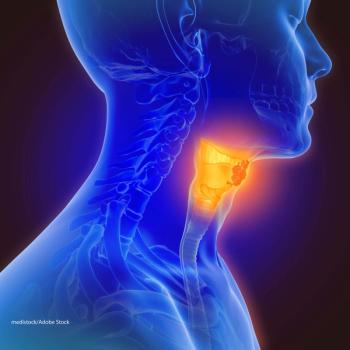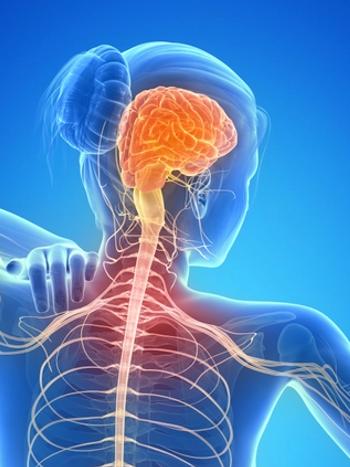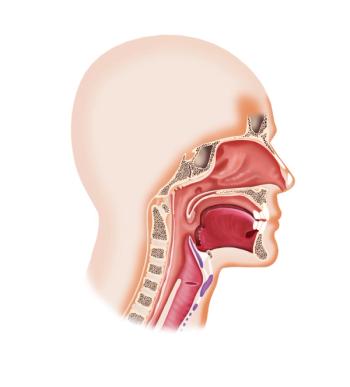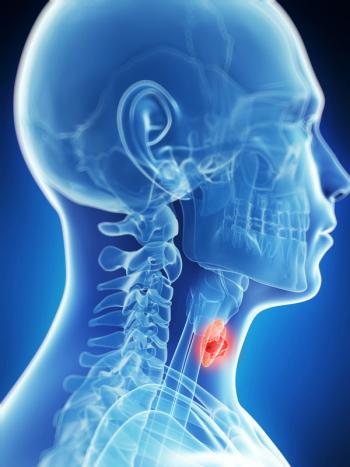
Oncology NEWS International
- Oncology NEWS International Vol 11 No 6
- Volume 11
- Issue 6
Xerostomia a Late Complication of Radiotherapy for Head and Neck Cancer
ST. PETERSBURG, Florida-Xerostomia, or mouth dryness, typically seen acutely with head and neck radiation, is also the most common late complication following radiation therapy for head and neck cancer, Avraham (Avi) Eisbruch, MD, said at the LENT (Late Effects of Normal Tissues) IV workshop on late effects criteria and applications. Dr. Eisbruch is associate professor of radiation oncology, University of Michigan Medical School, Ann Arbor.
ST. PETERSBURG, FloridaXerostomia, or mouth dryness, typically seenacutely with head and neck radiation, is also the most common late complicationfollowing radiation therapy for head and neck cancer, Avraham (Avi) Eisbruch,MD, said at the LENT (Late Effects of Normal Tissues) IV workshop on lateeffects criteria and applications. Dr. Eisbruch is associate professor ofradiation oncology, University of Michigan Medical School, Ann Arbor.
"Xerostomia is a major cause of reduced quality of life in survivors," Dr. Eisbruch said. In addition to its effects on subjective well-being, it can cause alterations in speech; changes in taste and swallowing contributing to malnutrition; and oral pathology, including mucosal fissures, ulcerations, candidiasis, dental caries, and even osteonecrosis.
As the salivary glands are highly sensitive to radiation, xerostomia usually begins early in radiation therapy. In the first week of a 7-week course of radiation therapy, saliva output may decrease to 10% to 40% of pretherapy levels. If the radiation dose is relatively low, saliva output may recover, but with standard doses, xerostomia is usually permanent.
Late xerostomia differs from the acute form in that thick, sticky saliva disappears as mucinous secretions decline, whereas with acute xerostomia, serous secretions decrease early in response to radiation therapy.
"Through this conference, we hope to define how best to measure xerostomia," Dr. Eisbruch said. "There are several validated scales, but our hope is to choose one that will allow us to compare different treatments using the same language."
Current methods to measure xerostomia include patient-reported scales, clinician-rated instruments, and objective measures for documenting injury and for use in intervention studies. As both salivary output and symptoms improve continuously with years elapsed since radiation therapy, reporting measures of xerostomia need to state clearly the time points used.
Objective Measures
Of the different objective tests to measure saliva production, generally the simpler tests are more practical, Dr. Eisbruch said. Selective flow rate measurements from each major salivary gland are more labor intensive than measurements of whole-mouth saliva and do not include output from the minor glands. However, they may be better for assessing salivary dose-response relationships.
Stimulated salivary flow rates give higher volumes and hence may be more reliable than nonstimulated flow rates. Although scintigraphic evaluation correlates well with salivary flow and may provide spatial information that cannot be obtained by other methods, it is technically demanding, he said.
Patient-Reported Measures
According to Dr. Eisbruch, the observer-rated Radiation Therapy Oncology Group (RTOG) scale for xerostomia is "not a good one, judged by modern quality of life evaluation practice and research standards."
The criteria for the LENT-SOMA scale include subjective measures scored from 1 for occasional dryness to 4 for complete, debilitating dryness; objective measures rated from 1 for normal moisture to 4 for absence of moisture; management measures scored from 1 for no intervention to 4 for constant use of salivary substitute; and analytic measures ranging from 1 for 76% to 95% of pre-radiation therapy saliva to 4 for 0% to 25% of pre-radiation therapy saliva.
Dr. Eisbruch feels that patient-reported subjective scales are best used to reflect quality of life. Some xerostomia-specific questionnaires have been validated, but most studies show no good correlation between objective measures of salivary output and patient reports of xerostomia. With specific interventions, he said, objective measures may improve while subjective measures worsen, or vice versa.
"To assess both quality of life and physiological complications of mouth dryness, xerostomia evaluation should include both a validated patient-reported xerostomia instrument and whole-mouth stimulated saliva measurements," he said.
The ultimate goal of rating scales, Dr. Eisbruch said, are to help develop a wider range of more effective treatments and preventive interventions for xerostomia. Presently available therapies, including parasympathetic stimulators or amifostine (Ethyol) to protect the salivary glands during radiation therapy, are usually only partially effective, he said.
He noted that recent technology allows partial sparing of the salivary glands while irradiating nearby tissues using IMRT (intensity-modulated radiation therapy).
Articles in this issue
over 23 years ago
Gleevec Effective as First-Line Therapy of CML: IRIS Trialover 23 years ago
Curcumin May Enhance TRAIL-Induced Cancer Cell Deathover 23 years ago
Symptom Clusters or Groupings Are Common in Cancer Outpatientsover 23 years ago
Allogeneic BMT Ups 5-Year EFS in Ph- ALLover 23 years ago
HIV-1 Vaccine Proving Safe, Immunogenic in Humansover 23 years ago
ACS to Fight Tobacco ‘Pandemic’ Worldwideover 23 years ago
Aspirin Helps Prevent Recurrent Large Bowel AdenomasNewsletter
Stay up to date on recent advances in the multidisciplinary approach to cancer.

















































































